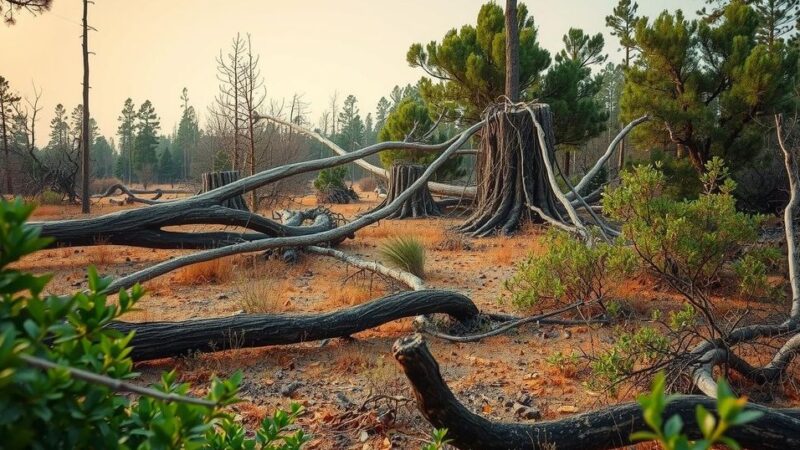New studies predict that climate change will enable the invasive spongy moth to thrive in North America by reducing the effectiveness of its natural fungal control, leading to increased defoliation and potential ecological disaster.
Recent research conducted by the University of Chicago and Argonne National Laboratory has revealed that increased temperatures and reduced moisture levels in North America may facilitate the spread of the invasive spongy moth (Lymantria dispar). As climate change alters environmental conditions, the growth of a natural fungus that helps control the moth population is expected to decline, potentially leading to significant ecological damage and economic costs.
The long-standing presence of the spongy moth in North America, initially introduced from Europe in 1869, has resulted in widespread tree defoliation, primarily affecting oak trees. Against this backdrop, a fungal infection known as Entomophaga maimaiga, which controls moth populations, took hold in 1989 and has since mitigated damage to forests. However, with climate conditions shifting, researchers assert that decreased fungal effectiveness could exacerbate outbreaks.
Greg Dwyer, a prominent ecologist involved in this study, emphasized, “The vast majority of previous climate change studies look at individual organisms, but a small amount of climate change can have a big effect when you compound it across multiple species.” The collaborative effort of Dwyer and atmospheric scientists focused on refining models that consider numerous ecological interactions, leading to a clearer understanding of how climate dynamics impact species and their relationships.
The spongy moth, originating from Europe, has been a destructive pest in North American forests since the late 19th century. Efforts to manage its population have included introducing the *Entomophaga maimaiga* fungus, which has historically helped to limit outbreaks. However, with the ongoing changes in climate, scientists are increasingly concerned that these biocontrol mechanisms may become less effective. Understanding the interactions between changing environmental conditions and species populations is crucial for predicting ecological outcomes as climate change accelerates.
In conclusion, the research highlights a concerning trajectory for the spongy moth population due to climate change driving the decline of its natural fungal predator. With reduced mortality rates among moths, the potential for rapid population increases poses a significant risk to North American forests, necessitating further investigation into adaptive management strategies to protect vulnerable ecosystems.
Original Source: www.technologynetworks.com






